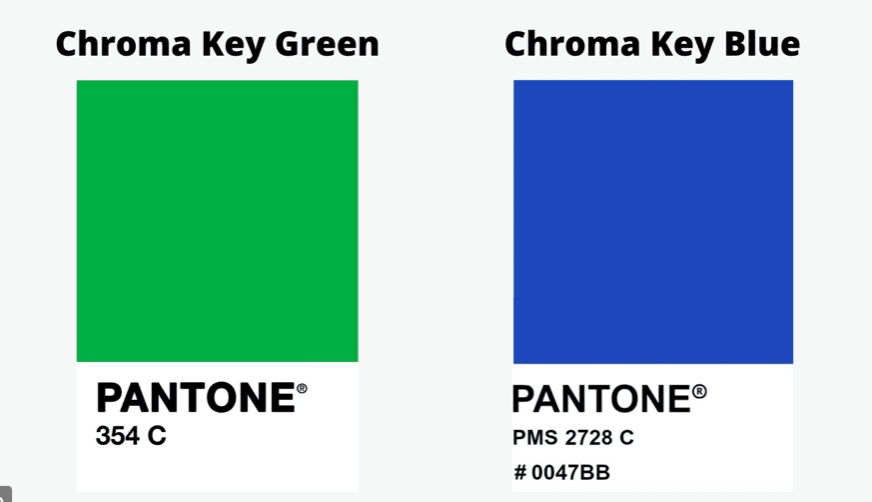Chroma Keying
- celineframpton
- Nov 27, 2021
- 3 min read
Chroma key can be defined as a single colour - one that differentiates from the tones of the subject matter typically blue or green. As an example human skin tones are red-pink, meaning green or blue are in contrast to them. In being in contrast to the subject. The blue or screen allows the subject and background to be isolated, and digital content or seperate footage to be added.[1] When the green/blue screen background has been keyed in a software programme, it will be fully transparent. [2] That "transparent area" is then filled with a different image or video - also known as compositing. [3]
"It allows for exciting and otherwise-impossible scenes to be produced, expanding filmmaking possibilities and language." [4]
Blue vs green?
The following section utilises information from After Effects Artist and Filmmaker CHARLES YEAGER's, "Blue Screen Vs. Green Screen: Which One Do You Need?," article published in 2020.
Blue
Traditionally used in film- blue smaller grain = cleaner edge
used in the optical printing process / compositing in the 1980's - Star Wars
Less color spill due to having a lower luminance value, meaning blue doesn’t bounce back as much light (as green.) Better for film subjects with small details, as blue screen retains that detail after the keying is completed.
Better for night scenes due to lower luminance and light reflection.
"when the color blue is exposed onto black and white film using a blue light, the blue color shows up as bright white, which can be used with an optical printer to begin the compositing process" [5]
a quick history of compositing plus the optical printing technique used in the original Star Wars films by special effects artist and cinematographer Mark Vargo.
Green
More common with digital camera - Capture twice as much green information as they do for red or blue colors = cleaner key around your subject, with fewer noise artifacts.
require less light
green spill makes it easier to composite subjects in daytime scenes easier, as green is brighter. a more natural appearance
Green often a default in contemporary keying software.
biggest con of green screens is the amount of color spill. Because the color green is brighter than blue, it naturally bounces back more light. This light will have a green hue to it.
I'm interested in how these colours could be utilised in my installation to suggest that the MDF models / substraights digital object details exist elsewhere. A suggestion it had an existence, representations counterpart in the digital, virtual realm.
Quick blue vs green test


These colours aren't exact chroma matches - just a test with close pre-made colours.
Green - There's a tad bit of shine in the test pot colour so that hinders the projection. Can change this to be matte in final paint. There seems to be a bit more clarity with green.
Blue - There's a tad bit of shine in the test pot colour so that hinders the projection. Can change this to be matte in final paint. Projection colours fairly similar.
Feels not as obvious as the green for green screen - not sure if this is a pro (purposeful ambiguity) or con (colour seems too far removed) but I enjoy the conceptual link between the blue screen idea - which "links" CGI element in post-production, with the idea of the hyperlink blue (which are not exact but very similar. The linking to somewhere external, somewhere virtual.
Though inn contemporary keying use it appears green is more popular.
Resene colour test w/

[1] - [5] "What Is a Green Screen (Film)?" Learn About the Advantages and Disadvantages of Using a Green Screen in Film Production, MasterClass, 2021, https://www.masterclass.com/articles/what-is-a-green-screen-film-learn-about-the-advantages-and-disadvantages-of-using-a-green-screen-in-film-production-and-5-tips-for-making-a-green-screen-at-home#what-is-a-green-screen
Charles Yeager, "Blue Screen Vs. Green Screen: Which One Do You Need?," The Beat, 2020, https://www.premiumbeat.com/blog/blue-screen-vs-green-screen/





Comments